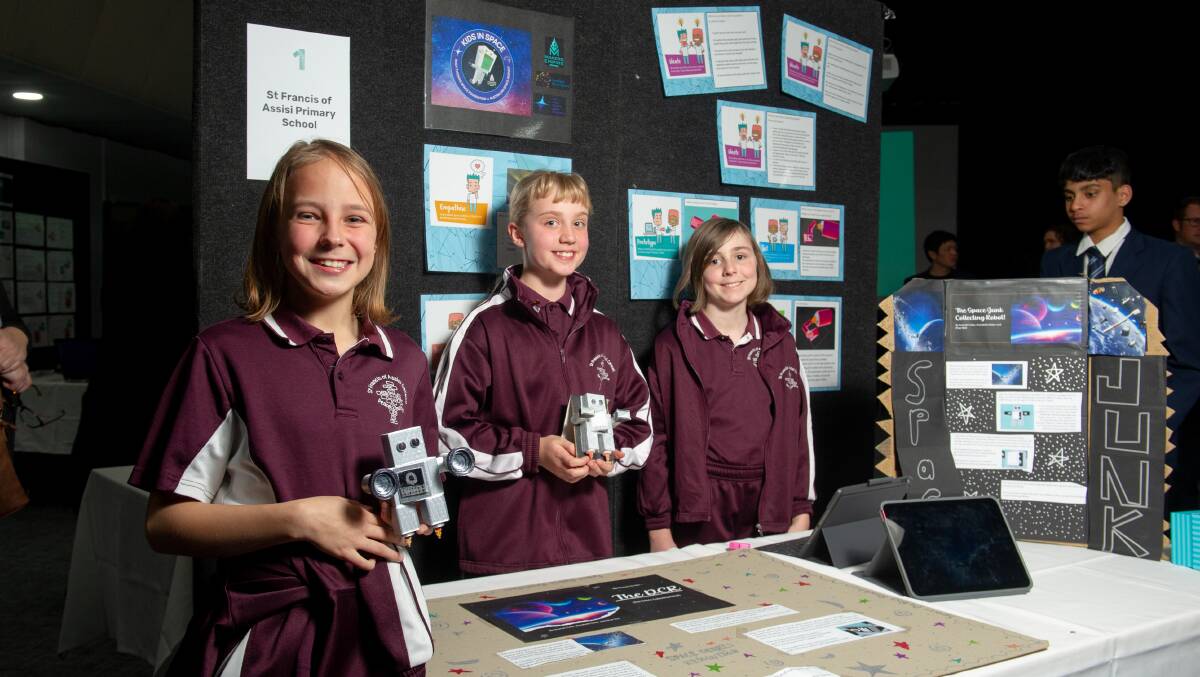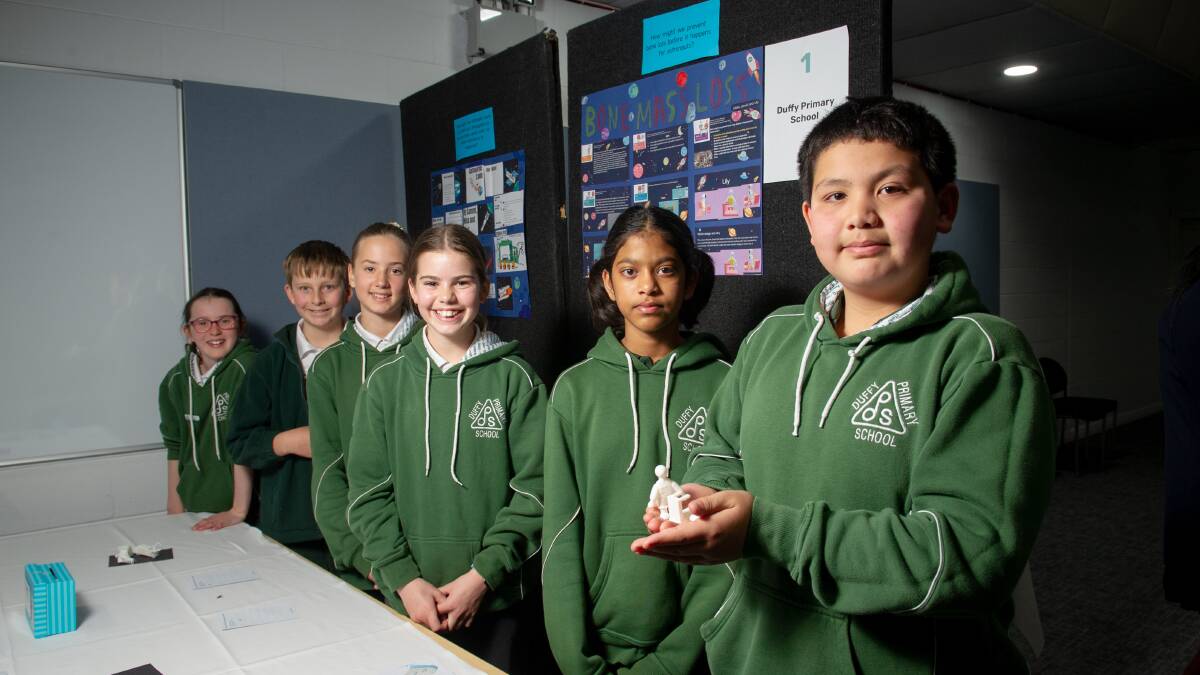About 34,000 bits of space junk larger than 10 centimetres are orbiting the earth. It's a big problem and it's only getting worse.
Subscribe now for unlimited access.
or signup to continue reading
Canberra students who took part in the Kids in Space program put their minds to creating solutions for cleaning up the space debris and showcased their work at a special event on Wednesday.
St Francis of Assisi year five students came up with the DCR, which stands for Debris Collecting Robot.
"What it does is it flies around space to planets collecting all the space junk," Khya Wall, 10, said.
The 3D-printed model has two camera eyes, two vacuum cleaner arms, an instruction plate and rocket booster legs.

"From our research, we found out there was one person has been hit by space junk on earth," Scarlett Fuller, 11, said.
"Her name was Lottie Williams and she got hit by falling debris about the size of a hand so it wasn't that big, and she got hit on the shoulder.
"Luckily she was unharmed but this happened in 1997, which isn't that log ago so it can happen any day now again."
Meanwhile, year six students from Duffy Primary School thought about ways to prevent bone density loss for astronauts.
Eddie Davis, 11, said astronauts needed to exercise two-and-a-half hours per day, six days a week to stay healthy in space.
"That's a lot and they have to use all this heavy equipment and stuff. So we wanted to make it easier for them to exercise," he said.
"Our idea is a little boot or shoe that has magnets inside it and when they go on a treadmill or an exercise bike it would be magnetic and they can walk around on it."

About 10,000 students from 80 schools across Australia took part in the program run by the Andy Thomas Space Foundation and sponsored by the Australian Space Agency.
At the beginning of the year, teachers received professional development in design thinking and were shown how to use the Makers Empire 3D design app.
Schools had visits from local space industry experts and each got a 3D printer to help the students construct their prototypes and final designs.
Makers Empire chief executive Jon Soong said the aim of the program was to spark an interest in science and technology from an early age.
"Once kids realise that space technology is all around them in the GPS in your phone or the weather ... it becomes a lot more tangible for a student," Mr Soong said.
"And then they realise that maybe this is something that could do in the future.
"With all the great space industry that's happening in Australia now it's trying to introduce them to that pathway."
READ MORE:
A team from Charnwood-Dunlop School won the peer-voted prize while a team from Kingsford Smith School won the showcase prize and a trip to the Australian Space Discovery Centre in Adelaide.
Mr Soong said the program had received positive feedback from schools.
"We're hoping that it goes again next year and expands.
"That's really the goal, to make stem and science and technology a really big part of education, especially in primary school."
We've made it a whole lot easier for you to have your say. Our new comment platform requires only one log-in to access articles and to join the discussion on The Canberra Times website. Find out how to register so you can enjoy civil, friendly and engaging discussions. See our moderation policy here.


